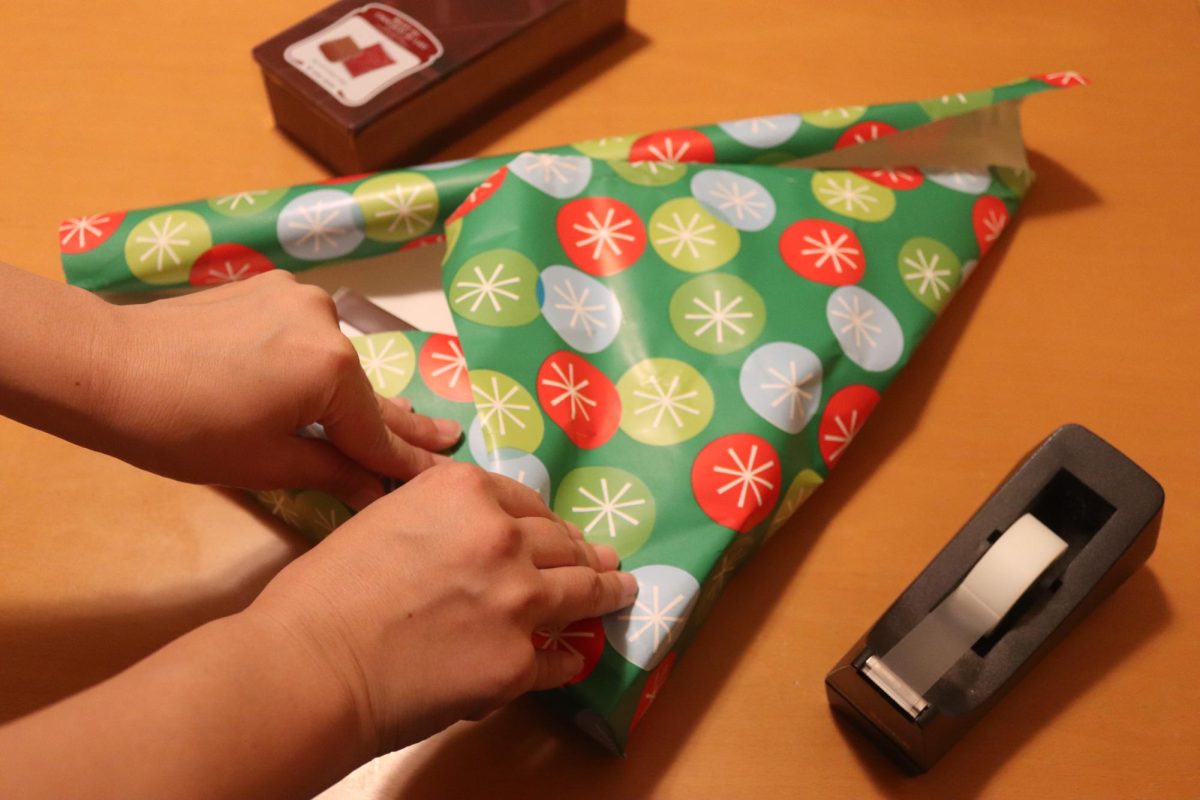Cutting down a Christmas tree. Wrapping presents. Spinning dreidels.
Every year, people from various backgrounds celebrate the holiday season with traditions rooted in society.
Since the classical era (700 B.C.E-400 C.E.), many have deemed the winter season as a period of celebration, according to a journal article by Mary Kate Hagan. Whether it means enjoying the first winter snow or getting together with distant relatives, the holiday season calls for festivities.
Many practices have prevailed over time, with people adopting and personalizing these traditions of the holiday season.
Getting a Christmas tree
One of the most common traditions globally is getting a Christmas tree and decorating it. While purchasing a tree and decorating it seems so simple, there is an extensive history behind this practice that many are unaware of.
According to historians from Britannica, the display of Christmas trees is thought to have represented the Garden of Eden, the biblical paradise described in the Bible. As a result, Christmas trees were initially displayed in Germany during the religious feast day of Adam and Eve.
German priest Martin Luther claimed that the evergreen represented one’s dutiful devotion toward God, with the candle and star decorations symbolizing a path to Jesus Christ.
However, over time, the use of Christmas trees has moved away from the traditional religious symbolism.
“Now, if you don’t celebrate Christmas, you can still have holiday decorations, and your tree doesn’t have to be green. I know some Jewish people who want to decorate their trees in white and blue,” said Kristen Gasior, former chief marketing officer and head of e-commerce at Balsam Hill, a holiday decoration retail company.
With Christmas trees no longer strictly representing religious practices, purchasing authentic and artificial Christmas trees has reached a wider audience.
Christmas tree farms have become America’s main source of mass-planted trees for the holiday season, with around 15,000 farms nationwide. Over time, the methods of cultivating such extensive crops utilized by farms have changed with new technological advancements.
“About 60 years ago, people started Christmas tree farms, just for the express purpose of planting trees in an area and growing them as Christmas trees,” said Paul Illingworth, the owner of a “choose and cut” tree farm in Castro Valley. “We now use shearing knives or machetes to hand shape all the trees.”
On the other hand, many prefer to purchase artificial Christmas trees due to their belief that artificial trees are more beneficial to the environment than their authentic counterparts and their added convenience.
“I think people like them because they are replicas of popular trees in nature, with artificial trees being a lot easier to maintain,” Gasior said. “Many artificial Christmas trees come with pre-strung lights, easily organizable branches, and pre-mantled components. I think a lot of people’s choice is based on preference.”
However, some believe that purchasing artificial trees should not be promoted due to the hidden detrimental effects on the environment.
“I think that one reason some people buy fake trees is that they mistakenly think it’s better for the environment,” said Tim O’Connor, the National Christmas Tree Association executive director. “What they don’t understand is that the real tree is far better for the environment because it’s a product of nature and can be fully recycled, rather than stay in the landfill after only six to seven years of use.”
For many, physically getting a tree has transformed into a generational tradition.
“We have a lot of customers that come in and say that they came to the tree farm as kids. We’ve been in operation for over 50 years, so many customers have returned with their kids to cut a tree,” Illingworth said.
Gift giving
Furthermore, exchanging gifts with family and friends is another mainstream holiday tradition.
At its core, holiday gift giving is more than just an exchange of gifts.
“Giving gifts is more meaningful than receiving gifts because it makes everyone feel good,” said Jill Grant, an avid holiday gift giver. “It cheers people up, makes them happy, and shows that you love them.”
For many, the holiday gift-giving tradition is deeply tied to religious customs. In Christianity, giving gifts is inspired by the biblical story of the Magi, where gifts of gold, frankincense, and myrrh were given to the infant Jesus, according to the Basilica of the National Shrine of the Immaculate Conception.
“I was raised by the Christian traditions of Christmas, where we celebrate the birth of Christ on Dec. 25. Growing up, I believed in Santa Claus and was taught about Christ,” Grant said. “We always celebrated Christ’s birth on that day, and since God gave us Christ, we help give other people gifts.”
For others, secular traditions have been popularized within the past years, further embedding the custom into contemporary culture.
“Your culture changes your gift-giving traditions. Based on your culture, even if it isn’t religious, there are different traditions,” said Jasmine Lee, a sophomore at Carlmont High School. “Despite the religion, gift giving is about the relationship between the giver and recipient, because it solidifies the relationship.”
Spinning dreidels
A third holiday tradition rooted in Jewish celebrations is the game of dreidels. The use of dreidels is a part of the eight-day holiday, Hanukkah, which is celebrated globally.
Hanukkah originated in Jerusalem during the second century B.C.E., commemorating the rededication of the Second Temple, according to a journal article by Oliver Shaw Rankin.
The dreidel itself was first mentioned in ancient folklore, with little evidence present to prove its true origin. Among all the different variations of the dreidel’s origin, many maintain the same storyline.
“When the Greeks were controlling Israel, to study the Torah and do Jewish activities, Jews had to do such practices undercover,” said Lily Roberts, a sophomore at the Jewish Community High School of the Bay (JCHS). “That’s where the dreidel comes from. When the Greek guards would come, they would have the kids playing dreidel as a distraction, so they wouldn’t be caught learning.”
The game consists of the dreidel itself and game pieces, most typically Hanukkah gelt, chocolate wrapped in gold foil that looks like a coin. The dreidel’s four sides are labeled, and depending on which side the player lands on, they gain or lose game pieces.
“Hanukkah has a warm, family feeling, which might be how other people feel about Christmas,” Roberts said.












